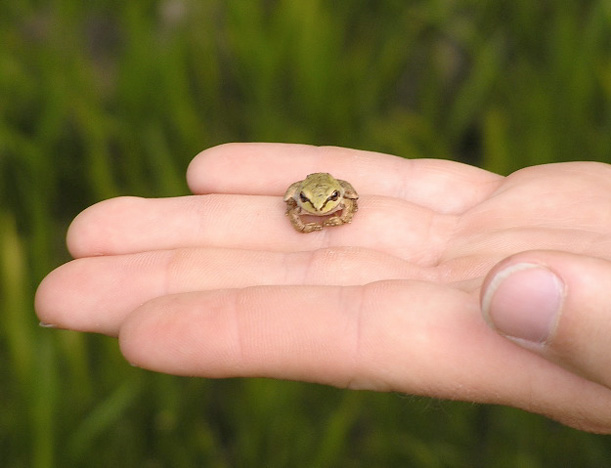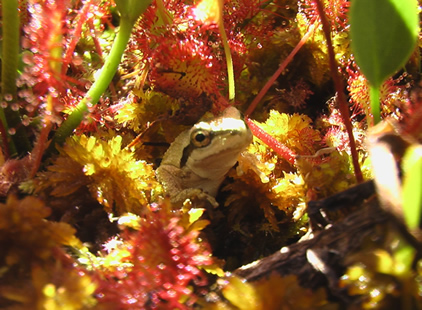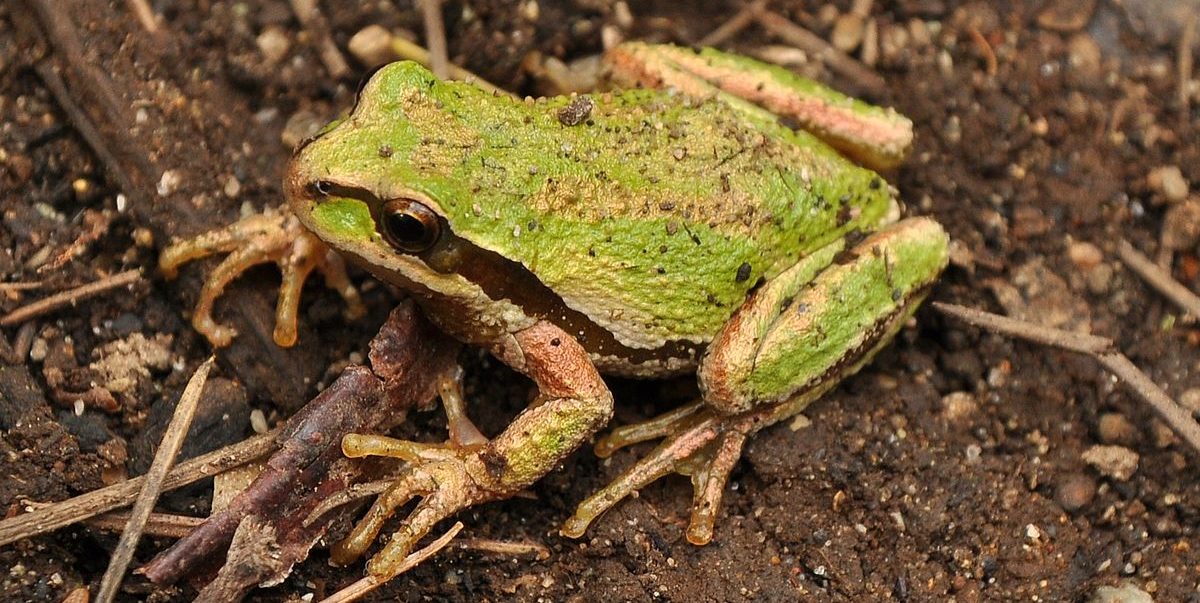Chorus frogs are amphibians (spend part of their life in water and part of it on land), and among the smaller of wildlife species of the Sierra Nevada region. They range in length from .75 to 2 inches. The color of their bodies can vary and may be green, brown, reddish, tan, or gray. They are found in nearly all habitat types all the way up to 12,000 ft.
The little frogs find shelter in rock crevices, under bark, in burrows, near streamside vegetation, and or in other areas.


How do Pacific chorus frogs reproduce?
They have a distinct and often very loud call that is frequently heard when they are spawning. After females lay their eggs in still pools of water, the eggs hatch and become tadpoles by the early summer. By late summer, the tadpoles have usually turned (metamorphosed) into adult frogs. After hatching the tadpoles have to survive on their own. This is why females can lay up to 700 eggs. Theoretically they could all become new frogs, but often many of them are eaten by a predator or die before they reach adult maturity.
What does the Pacific chorus frog eat?
Pacific chorus frogs eat a variety of foods from slugs to earthworms and insects.
Threats to amphibians
It’s important to note that amphibian species in general have been in grave danger of extinction in recent years for a variety of reasons such as disease and loss of habitat. Many efforts are underway to try to prevent amphibians from disappearing from their historic mountain habitats.


